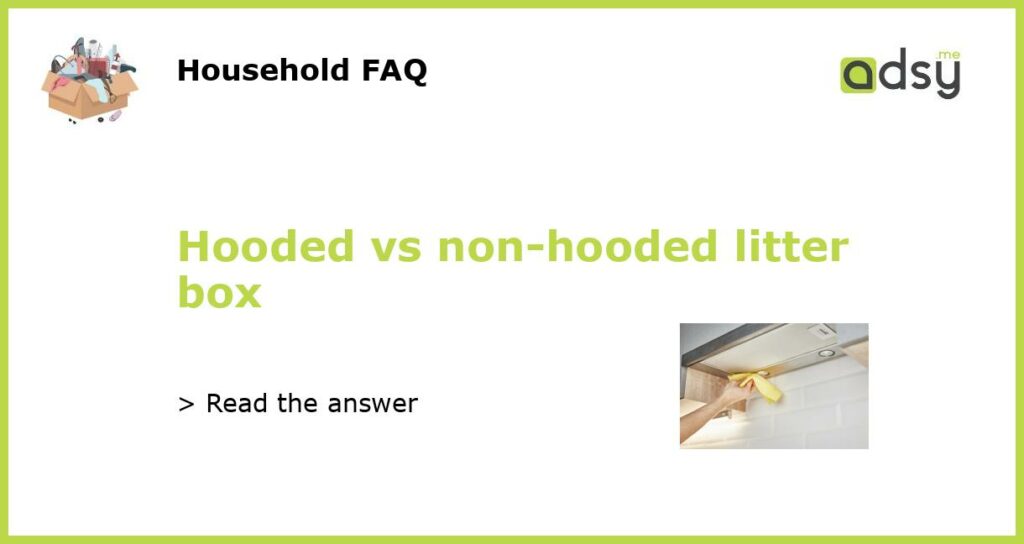Hooded vs Non-Hooded Litter Box: Which One is Right for You?
When it comes to choosing a litter box for your cat, there are several options to consider. One of the most important decisions you’ll need to make is whether to go with a hooded or non-hooded litter box. Each option has its own advantages and disadvantages, so it’s important to weigh them carefully before making a choice. In this article, we’ll explore the key differences between hooded and non-hooded litter boxes to help you make an informed decision.
Advantages of a Hooded Litter Box
1. Odor Control: One of the main reasons cat owners opt for a hooded litter box is because it helps contain odors. The enclosed design prevents odors from spreading throughout your home, making your living space more pleasant for both you and your cat.
2. Privacy: Cats are known for their need for privacy while using the litter box. A hooded litter box provides a secluded space for your cat to do their business without feeling exposed. This can reduce their anxiety and promote more consistent litter box usage.
3. Containment: Another advantage of a hooded litter box is that it helps prevent litter scatter. The hooded design contains the litter, ensuring it stays inside the box and doesn’t end up on your floors or furniture. This can save you time and effort in cleaning up after your furry friend.
Disadvantages of a Hooded Litter Box
1. Size Limitations: Hooded litter boxes tend to be smaller in size compared to non-hooded ones. This can be a disadvantage, especially if you have a larger cat who may feel cramped in a tight space.
2. Poor Ventilation: While a hooded litter box helps contain odors, it can also trap ammonia fumes inside. This can be unpleasant for your cat and increase the risk of respiratory issues. Regular cleaning and proper ventilation are important to mitigate this problem.
3. Accessibility: Some cats may struggle with entering and exiting a hooded litter box, especially if they have mobility issues or are elderly. It’s important to consider your cat’s physical abilities when deciding between a hooded or non-hooded option.
Advantages of a Non-Hooded Litter Box
1. Size and Accessibility: Non-hooded litter boxes tend to be larger and offer more space for your cat to move around comfortably. This is especially important if you have a larger breed of cat or multiple cats using the same litter box.
2. Better Ventilation: Non-hooded litter boxes provide better air circulation, which can reduce the risk of respiratory issues for your cat. The open design allows odors to dissipate more effectively, making the litter box area more comfortable for both you and your pet.
3. Easy Monitoring: With a non-hooded litter box, it’s easier to keep an eye on your cat’s litter box habits. This can be important for monitoring changes in urine or feces that may indicate underlying health issues. It also allows for quick and easy scooping of the litter without having to remove a hood.
Disadvantages of a Non-Hooded Litter Box
1. Litter Scatter: One of the main downsides of a non-hooded litter box is the potential for litter scatter. Without a hood to contain the litter, it can easily spread outside the box and create a mess in your home. Regular cleaning and placing a mat around the litter box can help mitigate this issue.
2. Odor Spread: Compared to a hooded litter box, a non-hooded one may allow odors to spread more easily. This can be a concern if your litter box is located in a high-traffic area or if you have guests coming over frequently. Regular cleaning and proper litter maintenance can help minimize odor issues.
3. Lack of Privacy: Some cats prefer a more secluded environment while using the litter box. A non-hooded litter box may not provide the privacy some cats desire, which can lead to anxiety or inconsistent litter box usage. You can address this by placing the litter box in a quiet and low-traffic area of your home.






